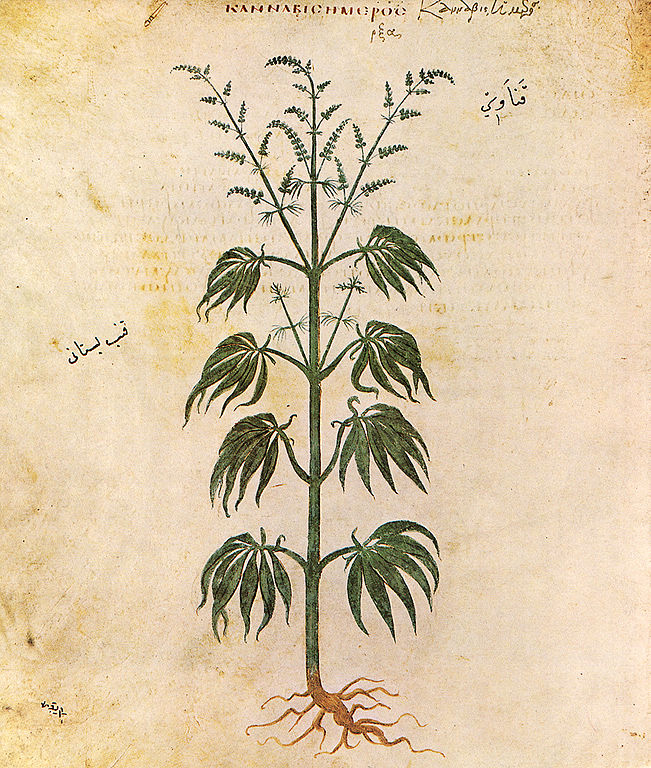|
Grand Fromage posted:If deer horn doesn't work for making a composite bow I don't think there was anything in Japan they could use. Rams I guess? They did have sheep. I don't think goats live in Japan. Actually, baleen. They made very small composite bows, used for selfdefense, accompanying nobility in carriages.
|
|
|
|

|
| # ? May 31, 2024 08:47 |
|
Squalid posted:looking at Korean bows and seeing they are made from water buffalo horn and I'm like "Water buffalo in korea? da gently caress?" but thinking about it they probably just bought the horns from China or southeast Asia. They were indeed imported from china, and up to this day korean bowyers buy them from there.
|
|
|
|
Zopotantor posted:Just one final post about bows... I'm kind of a dick for saying this, but this is mostly show and some really seriously weird ideas, and the bow's design is a mess, but the video is effectful and pleasant to look at. Sort of the opening sequence of Conan the Barbarian in regards to smithing, giving a real smith a stroke.
|
|
|
|
cheetah7071 posted:humidity too I've heard  Surprisingly, it's dryness. Surprisingly, it's dryness.  Wood, horn and sinew need a certain % of humidity to remain flexible. This is actually also a thing for most bowyers that make selfbows. There's a video of a dude out there who makes a pretty heavy english longbow with ash, which is quite impossible under normal conditions, because this kind of wood can't handle the profile at this weight....well, it can, but only when you operate in +70% relative humidity. Mongolia is dry. Really, really dry. What they do up to this day, is store the bow in a humid place. E.g. the box where you store meat and such. When you make a bow, the glue needs cold to gel, the colder, the stronger the bond. The reverse is also true. Hideglue gels at around 26°, sturgeon glue at 20° other fish glues have intermediate qualities, others don't gel at all. You can make glue from rawhide, sinew leftovers, etc. Wikipedia et al. would make you believe that fish glues are some sort of secret ingredient, but it really, really isn't. It's an additive that gives you more opening time, but higher concentrations come at severe drawbacks in regards to ambient conditions when gelling. They require a very narrow window of very specific conditions to turn out well. You can use hideglue to make hornbows, there won't be any significant differences in quality to bows that were made with a mix.
|
|
|
|
Good to see you around.
|
|
|
|
Thanks! Speaking of bows of the mongol conquest, there's an exhibition of a period find (and other stuff) in the National Museum in Kopenhagen that you could visit. I wanted to do a buildalong of this one, but my cell croaked in winter and erased everything about shaping and sinewing, so here's how far it got https://imgur.com/a/YHs9msn The bow is seasoning now, I might finish it in the first cold days in fall. Friends visited there and took some pics that allowed an estimate, another one managed to squeeze in and measure it (but i found out only after my bow was already with horns on). After all, the estimate was very close, although the original wasn't asymetric. The original also had ram horn like mine.
|
|
|
|
Power Khan posted:Thanks!  Amazing
|
|
|
|
holy poo poo he's back
|
|
|
|
Power Khan posted:Actually, baleen. They made very small composite bows, used for selfdefense, accompanying nobility in carriages. I was surprised to see baleen was apparently a standard component of European composite crossbows. Still not sure if the could be used in the same way as horn (I think it's made of keratin too). The author who I read describing it wasn't sure either. I assume it's somewhere in this cross section but not sure where   The layering in European crossbow prods could be really elaborate 
|
|
|
|
Great posts. Thank you
|
|
|
|
How does steel compare to a good laminate for a crossbow?
|
|
|
|
There were no Capiscum spp. in Ancient Rome/Viking Sweden right? My expensive formal training in archaeology and continuing work in the field didn't fail me? Because I am having this argument and just cannot find any evidence anywhere other than one botany paper in Swedish.
|
|
|
|
Far as I know, Capiscum is native to the Americas, and you don't see it in Europe until the 16th century. The Romans, at least, did have access to black pepper (not related to capiscum), which was imported from India, and I assume the Vikings would have gotten it the same way. But none of the new world peppers.
|
|
|
|
As I thought. I assume references to red fleshed, seed-bearing peppers in Roman sources are A. melegueta, since they would have had access to that from the Trans-Saharan trade networks. The species fits the description and makes more sense. Thanks for the help. Dunno how many of ya'all frequent C-SPAM, and not to stir up drama, but there is a whole ancient history thread that just seems designed to spread misinformation and I am in that quarter of archaeologists who have made combating that sort of stuff a big part of our public outreach. It just seems like most public sources of information are flat bad.
|
|
|
|
The Lone Badger posted:How does steel compare to a good laminate for a crossbow? Well I read composite prods fell out of use shortly after metal prods became common in the renaissance. So they were probably either worse or more expensive. KiteAuraan posted:There were no Capiscum spp. in Ancient Rome/Viking Sweden right? My expensive formal training in archaeology and continuing work in the field didn't fail me? I mean you probably just want a list of capiscum phylogeny that you can cross reference with a source for the natural range. You can just go to wikipedia and it'll give you the origin point for most of the common varieties, which are unsurprisingly all in the new world. What kind of evidence are you looking for though? If you just ask what evidence there is of chile peppers in ancient Rome I'm pretty confident the answer will be "there isn't any." You can find studies of the biogeography and domestication of common chiles easily enough, here for example, however it's hard to rule out that there isn't some other, unmentioned Capiscum spp. lurking hidden on Eurasia somewhere vikings could have eaten. That seems really unlikely but eh.
|
|
|
|
KiteAuraan posted:There were no Capiscum spp. in Ancient Rome/Viking Sweden right? My expensive formal training in archaeology and continuing work in the field didn't fail me? Yup. No capsicum, no potatoes, no tobacco, no tomatoes, no maize, no loving chocolate. Life must have sucked.
|
|
|
|
I sort of have the data already since I know a bit about the domestication and spread of Capiscum due to my ongoing interest in domesticates and their spread and US Southwest/Mesoamerica research focus. The argument this paper is giving is that C. frutescens was found in Medieval Lund, but there are no photos and also no real discussion of dating or context. So my argument is intrusive post-Columbian Exchange peppers that just got pushed into an older context. It's pretty common for it to happen. I also really appreciate the article since it seems more up to date than the source I was looking at. This is the paper in question: https://www.diva-portal.org/smash/get/diva2:1203029/FULLTEXT01.pdf, mostly in Swedish, but with an English summary. Also, I find it interesting that chocolate makes it as far north as Chaco Canyon, but it doesn't seem chilis do, even though wherever the Puebloans got chocolate probably had chili and used it in their cacao drink.
|
|
|
|
KiteAuraan posted:As I thought. I assume references to red fleshed, seed-bearing peppers in Roman sources are A. melegueta, since they would have had access to that from the Trans-Saharan trade networks. The species fits the description and makes more sense. Thanks for the help. Everyone in C-SPAM is a moron or pretending to be a moron which is just as bad. Romans had access to three pepper type things and they don't make a distinction in their writing. Black pepper as mentioned, long pepper, and grains of paradise. Of the three long pepper seems to have been the most popular. Chilies are an American plant, despite what Koreans like to claim.
|
|
|
|
Grand Fromage posted:Everyone in C-SPAM is a moron or pretending to be a moron which is just as bad. I found out recently that kimchee was traditionally non-spicy and even though it makes sense, I have a hard time imagining what Korean food is like without peppers since spicy is one of the three flavors of Korean food.
|
|
|
|
Don Gato posted:I found out recently that kimchee was traditionally non-spicy and even though it makes sense, I have a hard time imagining what Korean food is like without peppers since spicy is one of the three flavors of Korean food. A Korea goon was once asked to leave the kimchi museum after asking why the "ancient kimchi" had chili peppers in it.
|
|
|
|
I've wondered about Indian food, with my best guess being lower spice with maybe an increased amount of black and long pepper and ginger than modern recipes. If it was as pungent as the post-chili cuisine at all.
|
|
|
|
I can only assume that pre-exchange, food kinda sucked everywhere in the world
|
|
|
|
KiteAuraan posted:I sort of have the data already since I know a bit about the domestication and spread of Capiscum due to my ongoing interest in domesticates and their spread and US Southwest/Mesoamerica research focus. The argument this paper is giving is that C. frutescens was found in Medieval Lund, but there are no photos and also no real discussion of dating or context. So my argument is intrusive post-Columbian Exchange peppers that just got pushed into an older context. It's pretty common for it to happen. that sounds like a stupid theory but let's think about it. Assuming for the sake of argument that they really did find pre-Columbian seeds, and that the peppers made it to Europe in the Roman era even, what kind of other evidence should we expect to find? You're better qualified than I to consider the archeological record, but if we were to look at the genetics of European chiles we might expect to see a few thing that would be surprising. In particular, we'd expect to find more cultivars with greater genetic diversity across the continent than we would in places that received the fruit at a later date. We might even be able to use a genetic clock to calculate the approximate date when European cultivars separated from American varieties. Calculations would be complicated somewhat, since we might expect later re-imports of American varieties to influence the European stock, but we might still be able to find some signal. There seem to be a lot of genetic studies of chiles here's another, but they all seem to focus on the Americas, for obvious reasons. However its possible there is research on the European varieties, and most likely it's just really boring and exactly what you would expect. If they did exist in europe this early we might expect to see them illustrated in art and described in texts. Why aren't chiles illustrated in the 6th century Byzantine naturalist text the Vienna Dioscurides? There should really be some kind of confirmation Here's an example of an illustration from that text:  It was probably made for one of the Emperor's daughters, but it was probably kept for centuries in a hospital as a medical textbook. It also includes what might be the first illustrated bird guide!
|
|
|
|
Archaeologically you would expect to find artistic representations, and based on research on Mesoamerican ceramics, residue containing tell-tale alkaloids. Pretty similar to how Patricia Crown found theobromine residue on cylindrical vessels at Chaco. Also direct evidence in the form of abundant seeds and fruit remains in the right sealed contexts, though Capsicums are pretty rare to find. Basically a bunch of things that are absent. Also absent outside Mesoamerica, South America and the Caribbean on the right side of the planet.cheetah7071 posted:I can only assume that pre-exchange, food kinda sucked everywhere in the world Depends on how you feel about duck fat instead of lard and venison or turkey instead of beef or chicken in your tamales and tacos. Also no cheese, but you had tortillas, tamales, molé and hot chocolate, so it's a wash.
|
|
|
|
The Roman food I've made has all been pretty good. Salty though.
|
|
|
|
Grand Fromage posted:A Korea goon was once asked to leave the kimchi museum after asking why the "ancient kimchi" had chili peppers in it. Why am I not surprised they have an entire museum dedicated to kimchi. KiteAuraan posted:Depends on how you feel about duck fat instead of lard and venison or turkey instead of beef or chicken in your tamales and tacos. Also no cheese, but you had tortillas, tamales, molé and hot chocolate, so it's a wash. The hot chocolate might also be spicy instead of sweet, depending on where you are. poo poo is delicious, I can't recommend it enough.
|
|
|
|
Don Gato posted:Why am I not surprised they have an entire museum dedicated to kimchi. If you want hilariously nationalist museums, Korea has some doozies. I used to live in the big whaling center, and there was a petroglyph museum which spent a lot of time talking about how Koreans invented whaling 12,000 years ago and had an exhibit with a 12,000 year old Korean whale net clearly made of nylon. The only museum I've ever seen on the level of some of the nuttier Korean ones is the private museum at the Yasukuni shrine, which is uh... juuuuust a bit on the right wing revisionist side. The national museums in Seoul are fairly good overall, though there's still some hot steaming bullshit in there.
|
|
|
|
I've heard the Japanese national museums aren't bad, in particular acknowledging the Han, Tang and Three Kingdoms of Korea cultural influence on Kofun and Yamato Period culture. Though who knows if the LDP has changed that. Ceramics are my thing, so it was interesting to see Silla and Baekje ceramics identical to locally produced Kofun wares. And both are similar in technology in earlier Chinese sites. The stoneware is markedly different from the Jomon material, of any Jomon period.
|
|
|
|
KiteAuraan posted:It just seems like most public sources of information are flat bad. this is why my favorite username is 'Corn in the Bible'. It tells a whole story
|
|
|
|
KiteAuraan posted:I've heard the Japanese national museums aren't bad, in particular acknowledging the Han, Tang and Three Kingdoms of Korea cultural influence on Kofun and Yamato Period culture. Though who knows if the LDP has changed that. Japan's national museums are the least nationalist I've seen in Asia for sure. The big one I went to in Tokyo (I think in Ueno park?) had its galleries organized chronologically, the first one was prehistory and the second was about Koreans bringing all the trappings of civilization to Japan and sparking the first organized kingdoms. Had some neat Korean artifacts excavated in Japan in there. I suspect that narrative is oversimplified, but just the fact that a major Japanese museum was attributing the origins of Japan to Korea was pretty amazing to see after I'd been living in Korea for a while. I cannot imagine a museum in Korea acknowledging any contributions of Japan, unfortunately.
|
|
|
|
KiteAuraan posted:I've wondered about Indian food, with my best guess being lower spice with maybe an increased amount of black and long pepper and ginger than modern recipes. If it was as pungent as the post-chili cuisine at all. There apparently some native plants floating around that area that have the same spiciness level though you get weird side effects with them like numbing. Ill have to look back at what they were called but I know at least one of them is illegal to import to the states. Tunicate posted:this is why my favorite username is 'Corn in the Bible'. How so? Telsa Cola fucked around with this message at 07:40 on Aug 20, 2019 |
|
|
|
Zopotantor posted:Yup. No capsicum, no potatoes, no tobacco, no tomatoes, no maize, no loving chocolate. Life must have sucked. You could eat opium and huff sulfur until you had a vision, I guess.
|
|
|
|
KiteAuraan posted:I've heard the Japanese national museums aren't bad, in particular acknowledging the Han, Tang and Three Kingdoms of Korea cultural influence on Kofun and Yamato Period culture. Though who knows if the LDP has changed that. From personal experience, the Yasukuni Shrine is very much its own category of crazy nationalist compared to the others I've seen in Japan (when I went there was a placard claiming WWII was caused by the US forcing Japan to conduct Pearl Harbor and all Japan wanted to do was create a greater east asian co-prosperity sphere against imperialism), but I'll readily admit I haven't been to Korea or China yet so I don't know what those museums are like. Telsa Cola posted:How so? Probably because corn is a new world food. I've heard that it also used to be a generic term for other wheats though?
|
|
|
|
Americans use the word “corn” only for maize, a plant native to what is today Mexico.
|
|
|
|
Don Gato posted:
Yeah it was basically used as a term for a lot of things that had grains. Its why maize is a all around better term to use.
|
|
|
|
Squalid posted:If they did exist in europe this early we might expect to see them illustrated in art and described in texts. Why aren't chiles illustrated in the 6th century Byzantine naturalist text the Vienna Dioscurides? There should really be some kind of confirmation
|
|
|
|
Don Gato posted:From personal experience, the Yasukuni Shrine is very much its own category of crazy nationalist compared to the others I've seen in Japan (when I went there was a placard claiming WWII was caused by the US forcing Japan to conduct Pearl Harbor and all Japan wanted to do was create a greater east asian co-prosperity sphere against imperialism), but I'll readily admit I haven't been to Korea or China yet so I don't know what those museums are like. I liked the part about how Manchukuo had nothing whatsoever to do with Japan. Chinese state museums are surprisingly light on the nationalism. The National Museum in Beijing does have one giant propaganda room, but it's clearly the propaganda room. Of the museums I've been to in the three countries I'd say Korea's have the most nationalist BS, but that said it's not overwhelming in the major museums. It's just that Japan and China have less than you'd think. You have to go to small regional museums to get the good poo poo in Korea.
|
|
|
|
Don Gato posted:Probably because corn is a new world food. I've heard that it also used to be a generic term for other wheats though? this means...something...to fundagelicals, but i forget what
|
|
|
|
Don Gato posted:Probably because corn is a new world food. I've heard that it also used to be a generic term for other wheats though? And still is in British English, so presumably the AV is to blame. E: Authorised Version = King James Version. Safety Biscuits fucked around with this message at 08:54 on Aug 20, 2019 |
|
|
|

|
| # ? May 31, 2024 08:47 |
|
Safety Biscuits posted:And still is in British English, so presumably the AV is to blame. the sort of person who would care that much about the bible while forgetting it was originally written in hebrew and greek reads the kjv
|
|
|































